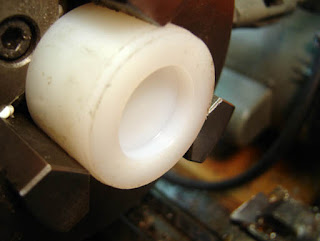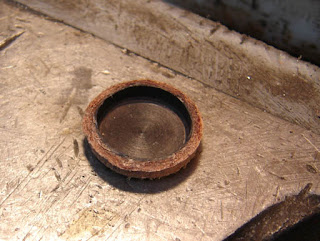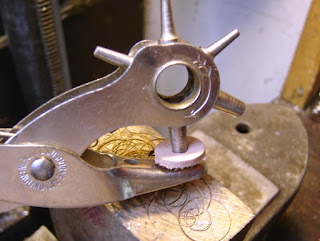
As I related before, the seals on the Predom worked ok, but were really nasty looking.

So I turned up a form from some UHMW scrap.

And pressed a piece of wet leather in, leaving it clamped for 24 hours.

Then I trimmed away the excess.

I finished up with a very sharp xacto.

Doesn't look bad.

I made the inner washer by stamping with an arch punch.

Then punching the hole. I knew all my leatherworking tools would come in handy someday.

Exciting!

Old and new seals.

I soaked them in oil for 24 hours.

The inner leather washer had to have the countersink for the screw head. I basically just carved it out with the xacto before soaking..

It sort of wiggled around a bit when I screwed down the screw, but I was able to massage it back round. I inserted it into the pistol and reassembled.
Well, it hasn't made any difference in velocity, although I'm hoping as it wears in it will become more efficient. We'll see. I had a hard time deciding between hair out and hair in, but the original seal seemed to have the hairy side out, so that's what I went with.





















